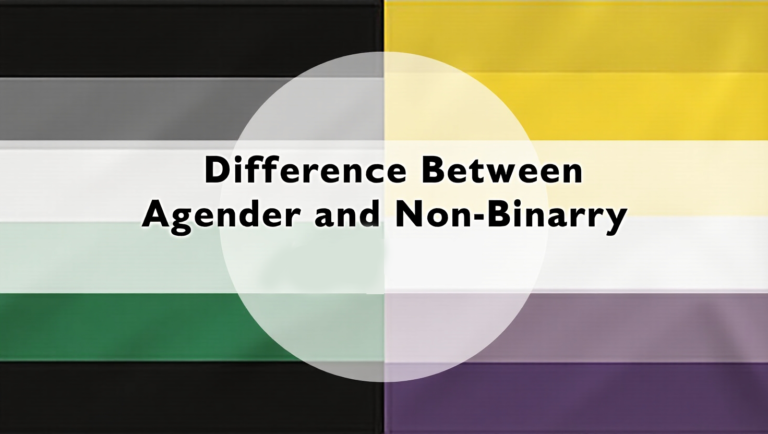In today’s world, where diversity and inclusivity are celebrated, understanding the meaning of lesbianism is essential. The term “lesbian” refers to a woman or non-man who is emotionally, romantically, or sexually attracted to other women or non-men. This article explores the origin of the word, the history of lesbianism, signs of lesbianism, and how it fits into the broader LGBTQ+ community. Additionally, we’ll highlight how you can proudly express your identity with products from LGBTQ CLOTHING, such as the Lesbian Flag LGBTQ Hoodie and the Labrys Lesbian Flag LGBTQ Hoodie.
The Origin of the Word Lesbian
The term “lesbian” has a rich history rooted in ancient culture, literature, and geography. Its evolution from a geographical identifier to a term for sexual orientation provides valuable insight into its modern significance.
Where Does the Word Lesbian Come From?
The word “lesbian” originates from the Greek island of Lesbos, located in the Aegean Sea. This island was home to the poet Sappho, who lived around 630–570 BCE. Notably, Sappho’s poetry celebrated love and relationships between women, making her a symbolic figure for female same-sex attraction. Over time, her association with Lesbos led people to use the term “lesbian” to describe women who share similar romantic or sexual orientations.
- Why are lesbians called lesbians? The term honors Sappho’s legacy and her connection to the island of Lesbos.
- What is the origin of the word lesbian? It stems from the geographical and cultural significance of Lesbos and Sappho’s poetry.
- Where did the term lesbian come from? It originated from the Greek island and was later adopted into modern language.
The Role of Sappho in Lesbian History
Sappho’s poetry, often referred to as “sapphic,” played a pivotal role in shaping the understanding of female relationships. Her works expressed deep emotional and romantic connections between women, which were groundbreaking for her time. Although people have lost much of her poetry, the fragments that remain have cemented her as an iconic figure in lesbian history.
- Lesbian name origin: The term is directly linked to Sappho and her poetic celebrations of love between women.
- Lesbian word origin: It evolved from the association of Sappho’s work with the island of Lesbos.
- History of lesbians: Sappho’s influence is a cornerstone in the historical narrative of lesbian identity.
Evolution of the Term Over Time
The word “lesbian” has undergone significant evolution over centuries. Initially, people used the term to describe anything related to the island of Lesbos. However, by the 19th and 20th centuries, society widely recognized it as a term for women who are attracted to other women. The growing awareness and acceptance of diverse sexual orientations influenced this shift.
- Where did lesbian come from?: From a geographical identifier to a term for sexual orientation.
- Lesbian terminology: The word has been adapted to fit modern understandings of gender and sexuality.
- Other words for lesbian: Terms like “sapphic” and “non-men loving non-men” have emerged as alternatives.
Cultural and Linguistic Impact
The term “lesbian” has not only shaped personal identities but also significantly influenced culture, language, and literature. People have used the term in various contexts, from academic discussions to everyday conversations, and it has become a symbol of pride and empowerment for many.
- Lesbian synonyms: People often use words like “sapphic,” “gay,” and “queer” interchangeably in certain contexts.
- Slang word for lesbian: Some individuals use terms like “lez” or “lesbo” colloquially, though others may find them derogatory.
- Lesbian lingo: The community has developed its own vocabulary to describe experiences and identities.
Modern Interpretations and Inclusivity
In contemporary times, the definition of lesbianism has expanded to include a broader spectrum of identities. The phrase ‘non-men loving non-men’ clearly reflects this inclusivity, as it acknowledges that lesbianism does not limit itself to cisgender women but also embraces non-binary individuals and others who identify with the term.
- Nonbinary lesbian meaning: This term refers to individuals who identify as non-binary but feel attracted to women or non-men.
- New definition of lesbian: Emphasizes inclusivity and the diversity of gender identities within this community.
- Lesbian gender: Recognizes that lesbianism is not confined to a binary understanding of gender.
What Does Lesbian Mean Today?
In modern times, the definition of lesbianism has expanded to include a broader spectrum of identities. It is typically defined as a non-man who is attracted to other non-men. This inclusive definition acknowledges the diversity within the community, including non-binary individuals who identify with lesbianism.
- Lesbian sexuality: Refers to the emotional, romantic, and sexual attraction between women or non-men.
- Non-men loving non-men: A newer definition that emphasizes inclusivity.
- Relationship: A partnership between two women or non-men who share a deep emotional and physical connection.
Signs of Lesbianism
Understanding one’s sexual orientation can be a journey. Here are some common signs that may indicate someone identifies as a lesbian:
- Emotional Attraction: Feeling a deep emotional connection to women or non-men.
- Romantic Interest: Experiencing romantic feelings toward women or non-men.
- Physical Attraction: Feeling sexually attracted to women or non-men.
- Early Signs of Lesbianism: Childhood or adolescent feelings of being different or drawn to female friends.
- Identity Exploration: Questioning one’s sexual orientation and feeling more aligned with lesbianism.
It’s important to remember that everyone’s journey is unique, and there is no right or wrong way to discover your identity.
What does mean lesbian in History?
The history of lesbianism is as old as human civilization. From ancient Greece to modern times, women loving women have existed in every culture. However, societal acceptance has varied greatly.
- History of lesbians: Women who loved women have been documented in ancient texts, art, and literature.
- Terminology: Over time, terms like “lesbian,” “sapphic,” and “non-men loving non-men” have emerged to describe this identity.
- women in society: Despite challenges, lesbian women have made significant contributions to art, politics, and culture.
Lesbianism and the LGBTQ+ Community
Lesbianism is a vital part of the LGBTQ+ community. It represents one of the many ways people experience love and attraction. The community provides support, resources, and a sense of belonging for individuals.
- Lesbian and LGBTQ+: Lesbianism is one of the identities under the LGBTQ+ umbrella.
- LGBTQ CLOTHING: Celebrate your identity with pride by wearing the Lesbian Flag LGBTQ Hoodie or the Labrys Lesbian Flag LGBTQ Hoodie.
Buy Now: Celebrate Your Identity with Pride
Show your pride and support for the community with these stylish and meaningful products from LGBTQ CLOTHING:
- Lesbian Flag LGBTQ Hoodie
Celebrate your identity with this cozy and vibrant hoodie featuring the pride flag. Perfect for everyday wear or LGBTQ+ events. - Labrys Flag LGBTQ Hoodie
Embrace the historical significance of the labrys symbol with this unique hoodie. A powerful statement of pride and empowerment.
Frequently Asked Questions
What does lesbian mean?
It is a woman or non-man who is emotionally, romantically, or sexually attracted to other women or non-men.
Where does the term “lesbian” come from?
The term originates from the Greek island of Lesbos, home to the poet Sappho, who wrote about love between women.
What is the origin of this word?
The word derives from the island of Lesbos and is tied to Sappho’s poetry, which celebrated female relationships.
What are the signs of lesbianism?
Signs often include emotional, romantic, and physical attraction to women or non-men, as well as a sense of identity alignment.
How does lesbianism fit into the LGBTQ+ community?
Lesbianism is a vital part of the LGBTQ+ community, representing one of the many ways people experience love and attraction.
What products can I buy to celebrate my identity?
You can celebrate your identity with pride by exploring products from LGBTQ CLOTHING. Check out our collection of pride outfits!
Conclusion
Understanding what it means to be lesbian involves exploring its history, terminology, and significance in the LGBTQ+ community. Whether you’re discovering your identity or supporting someone who is, therefore, it’s important to both celebrate diversity and promote inclusivity. Show your pride with stylish and meaningful apparel from LGBTQ CLOTHING, and embrace the beauty of being true to yourself.
By learning about the origin of this word , the signs of lesbianism, and its place in the LGBTQ+ community, we can foster a more inclusive and understanding world.










